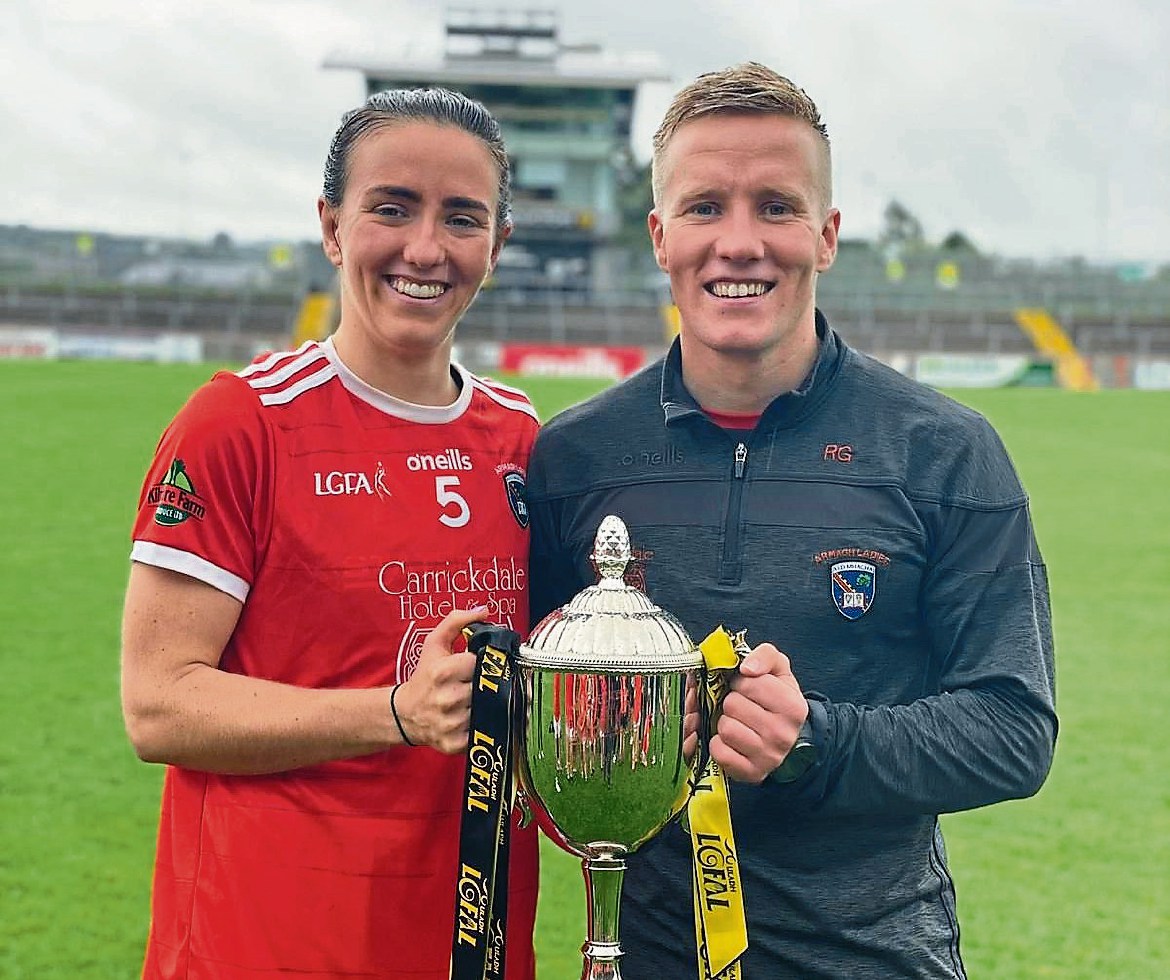By Shaun Casey
THE inter-county season is almost over and with club championships just around the corner, now feels like as good a time as any to assess the ‘new rules’ of Gaelic football. Well, they’re just the rules at this stage.
From a viewing perspective, the game is better. There won’t be too many that will dispute that. Sure, there’s still the odd tweak to be made here and there but all in all, Jim Gavin’s Football Review Committee have produced a better product than what we had become accustomed to.
But on the field, how have the new rules impacted the players? Ask David Clifford what he makes of them, and he’ll probably provide a glowing review. Ask the man marking him, with all that space in front of the pair, and he might not be just as cheery.
Jim McGuinness’ comments after Donegal’s remarkable 20-point victory over Meath were interesting. Due to the increased demands of the rule enhancements, players are having to be fitter than ever to cover the required distances.
“The game has increased, I’d say, by about 80-100 per cent on last year alone in terms of the physical attributes that are required in the game,” he said. “They’ve more distance in games, but their explosive distances have almost doubled, so the challenge is absolutely massive.”
The middle eight footballers are now box-to-box players. Up and down. Up and down. The midfield is a war zone with the long kickouts. A physical battle on every restart. The inside men are darting this way, darting that way. Sprint after sprint after sprint.
How different is the game compared to the one we knew over the past couple of decades? Strength and conditioning coach Ruairi Grimes, who owns his own ‘Focus’ gym in Lurgan, thinks the intensity of the game has certainly shot up.
“You do expect things to sharpen up and everything is starting to increase come championship time. Pitches are getting harder, and the weather is getting better, and all those factors may have an impact on the overall demand,” said Grimes.
“It’s one of those things that we won’t really know until we get more research and more data. If you look at Donegal, the running power, the pace, the turnovers and the counterattacks are phenomenal.
“The pace that they play with, that’s where the demands are. The demand doesn’t necessarily mean overall running load or running distance, the demand I see is the heart rate of the players.
“If an attack has just finished and it’s the midfielders that are involved, in the next 10 or 15 seconds, the ball is kicked out and they are expected to be out in the middle of the pitch again and contesting another ball.
“So, it’s not necessarily the overall running demand but it’s more the intensity that the game is played at. The heart rate is getting spiked up and it’s not getting a chance to come back down again.
“Before, there was a slower kickout maybe going short to the corner-back, but we don’t have that now. The players aren’t getting the chance to get that wee bit of recovery and to drop the heart rate down again.
“That allowed them to recover that wee bit more whereas now, the game is just up there. The solo and go as well, it’s just all go. What we noticed was the intensity and the heart rate, there’s a greater metabolic demand on the body rather than total volume or distance covered.”
Grimes is currently working with top Down Championship contenders Carryduff, with fellow Armagh man Finnian Moriarty at the helm. He has also previously worked with Clann Éireann when they won the championship in 2021 and the Ulster LGFA kingpins Armagh.
In terms of data on the playing demands, S&C coaches like Grimes don’t have a whole lot to work with. Everything so far has been based on the National League, but the St Paul’s clubman is hopeful of getting his hands on more research in the coming weeks and months.
“Everything goes back to the research we have available to us, and it was only done for the National League, and it’s limited at the minute, but we’ll hopefully get more post the All-Ireland Championship and the club championship.
“Nothing has changed dramatically for how I would approach a pre-season or even an in-season block of running or block of fitness work but we’re just having to take it week by week and build it from there then.
“You’ll have your coaches and managers that will coach their teams to their own strengths and they’ll setup tactically the way that suits their style of play but with all the talk of the demands, some coaches do want to keep pushing the running.
“What we have seen, the middle third has gone up a small amount, but the inside lines, they’ve maybe even decreased slightly. Coaches do want to push that running volume because that’s what is being talked about at the minute.”
While pushing the boundaries in terms of fitness is perhaps the main objective for club coaches all around the country, with the business end of the season closing in, Grimes feels that recovery between games and sessions should be priority.
“You play a game and then all of a sudden, you’re maybe going into a hard training session on the Tuesday night and then back to training on Thursday and that only pushes the lads towards an injury,” he continued.
“It’s a fine line to get that load management correct and tweak programmes for certain individuals. That’s the biggest thing that has to be taken into consideration whenever you are designing training sessions.
“Prioritising recovery 24 and 48 hours post-game is more beneficial for players rather than constantly pushing more running demands on them. With the quick turnaround between games, there’s only so much you can do before you start picking up injuries.
“It is important to take each individual as they come, and we tweak their programmes based on what they need in terms of the overall load management and keeping them injury free.”
Skills still pay the bills though and while the rules have changed, Grimes believes the ball work is still the most important aspect of training.
“Even at the lower-level club teams now, they’re bringing in S&C coaches because they feel if they’re not doing that, then they’re falling behind but at the end of the day, I don’t think that fitness will overrule the skill side of it.
“The skills now are done faster with the new rules and with more intent. At certain times of the year, you dial into your fitness, but everything boils done to the skills and performing the skills well under fatigue.
“Teams are getting stronger, they’re getting fitted and faster and at the top level, the top county and top club teams, there’s not much between them in terms of fitness. Everybody can get to that certain point so it’s still all about the skills.
“S&C coaches now are really clued into the sport itself, so you have a lot of fitness work being done with the ball to practise the skills while fatigued because that’s what’s going to stand by the players during games.”
At club level, Grimes has played both the man-marking corner-back role and the free-roaming middle eight position for St Paul’s and admits that he has really enjoyed club football under the new rules this season.
“I do enjoy the new rules and playing around that middle eight definitely suits me in terms of the running, I don’t mind getting up and down and battling for the break ball, so I have really been enjoying them.
“You do notice the increase of intensity and pace and if you turn the ball over, you have to turn on your heels and go again. That’s where they intensity is coming from, and they keep the whole flow within a game really well and it’s been great so far.”
Receive quality journalism wherever you are, on any device. Keep up to date from the comfort of your own home with a digital subscription.
Any time | Any place | Anywhere















